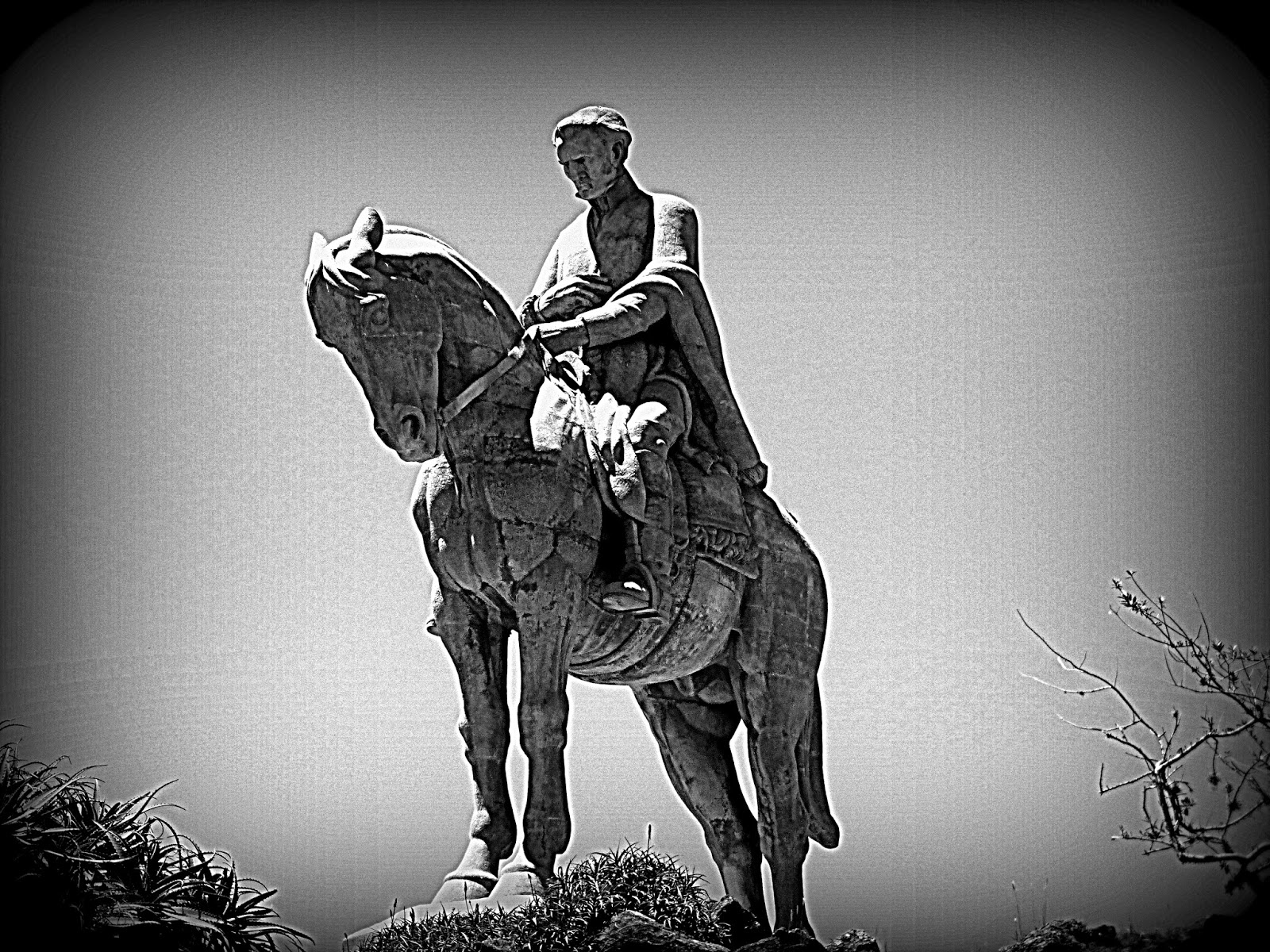We were up and out the door by 7:30 am to do a capacitacion in the Minas 1 Ward. The Harris' joined us and we had a wonderful Sunday School time together. All four of us were invited to give share some thoughts and testimony. Sylvia did a great job in sharing her testimony all in Spanish. She struggles with the language like I do. I give a little bit more of my family history story in Spanish.
Afterwards, we were told about a huge horse statue with General Artigas was located in Minas. A member of the ward kindly led the way in his vehicle. We were also able to had out a pass along card to some other visitors that were there with their family.
Minas / Cerro Artigas/ Hill of Artigas
The world's largest Artigas
At some point there began to grow in the community the idea of having a work of importance to honor the Gral. José G. Artigas. So it was that the neighbors began to gather bronze for the future monument and discuss the location. The years of delay and expectations generated around the work, prompted the determination to build the world's largest equestrian monument. (http://www.bicentenario.gub.uy/noticias/2012/cerro-artigas-minas-lavalleja-2/)
 |
| I like the fact that both their heads are bowed. "Artigas was a staunch democrat and federalist, opposed to monarchism. In his thought is visible the influence of Catholic clerics..." (wikipedia.com) |
 |
| With people in the picture, it gives a perspective of how big this really is. |
 |
| The restoration celebration only happened two weeks ago. (Oct 19, 2014) |
 |
| Martin takes excellent pictures whereever we go. |
 |
| The town of Minas. If I had to live in Uruguay, I would live in Minas. |
José Gervasio Artigas, (born June 19, 1764, probably Montevideo [now
in Uruguay]—died September 23, 1850, Ibiray, near Asunción, Paraguay), soldier
and revolutionary leader who is regarded as the father of Uruguayan
independence, although that goal was not attained until several years after he
had been forced into exile.
As a youth Artigas was a gaucho, or cowboy, in the
interior of what is now Uruguay. In 1797 he entered
the Spanish military forces, which then were mainly engaged in exterminating
bandits. Several years later (1810) he offered his services to the Buenos
Aires junta that was leading an independence movement against Spain. After
winning a brilliant victory at Las Piedras, he besieged Spanish-held Montevideo
for a time. In the face of superior Portuguese forces (called in from Brazil by
the Spaniards), Artigas led a dramatic withdrawal of about 16,000 people from
the region into Argentine territory.
Artigas then became the champion of federalism against the
efforts of Buenos Aires to assert centralized control over the whole Río de la
Plata region. In 1814 this struggle became a civil war. At first Artigas ruled
over about 350,000 square miles (900,000 square km) of what is now Uruguay and
central Argentina. His hold, however, was weakened by his insistence on
decentralized government and was finally broken by a Portuguese invasion, which
he resisted for three years. From 1820 he lived in exile in Paraguay; the
independence of his native Uruguay was finally achieved on Aug. 27, 1828. (http://www.britannica.com/EBchecked/topic/37173/Jose-Gervasio-Artigas)









No comments:
Post a Comment